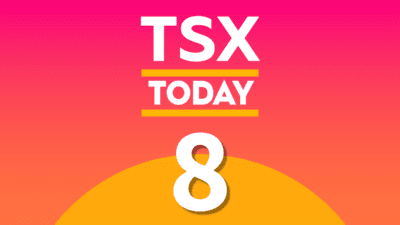If you’re a dividend investor, you’re likely aware that BCE Inc. (TSX:BCE)(NYSE:BCE) has increased its annual dividend for nine consecutive years. You’re also likely aware that over those nine years, BCE stock has averaged a 4-5% yield.
People like investing in BCE because of its stable dividend payouts. Even as interest rates rise, BCE’s dividend yield is still likely to beat what you’re going to get down at the bank, so you keep holding the stock.
But, here’s the thing: the dividend yield is only one part of the total return calculation.
It’s all about total return
What would you rather own if you had a $1,000 to invest?
Would it be stock A with a dividend yield of 2% and capital appreciation of 10%, or Stock B with a 5% dividend yield and 7% capital appreciation?
I know which one I’d pick. Stock A. Here’s why.
Under Stock A, you’d have $20 in dividend income in a single year along with $100 in capital gains. If you live in Ontario and sold at the end of the year, you’d pay approximately $33.12 in tax for a net return of 8.7%.
Under Stock B, you’d have $50 in dividend income in a single year along with $70 in capital gains. If you live in Ontario and sold at the end of the year, you’d pay approximately $33.12 in tax for a net return of 8.5%.
So, under this scenario, you would have been better off with Stock A.
You’ve got to have both
Dividend investors will argue that it’s a small price to pay for a consistent payout; not to mention the compounding effect of those dividend payments over the long haul.
However, consider BCE. Its streak started in 2009. If you’d invested $1,000 in BCE stock on December 31, 2008, you would have had $3,774 at the end of 2017 — an annualized total return of 15.9%.
Two-thirds of BCE’s return over the nine years came from capital appreciation.
The moral of the story: dividends are nice, but they’re meaningless if they don’t come with capital appreciation. Case in point, General Electric Company. It has paid a dividend the past 10 years, yet its stock’s gone in reverse.
For me, there’s only one thing that matters, and that’s total return.
To illustrate, I’ll give you three stocks that don’t pay big dividends but have outperformed a majority of the other stocks on the TSX and will continue to do so in the years to come.
My three candidates
Fairfax Financial Holdings Ltd. (TSX:FFH) currently yields 1.9%.
It’s had its ups and downs over the last year, but long-term Prem Watsa will continue to make good investments to grow the company. Like Warren Buffett, he isn’t concerned about the short term.
Over the last decade, Fairfax stock has delivered an annualized total return of 10.3% with over 80% of the return from capital appreciation.
Brookfield Asset Management Inc. (TSX:BAM.A)(NYSE:BAM) currently yields 1.5%.
If there’s a better capital allocator in this country, I’m not aware who that might be. CEO Bruce Flatt has built the alternative asset manager into one of the world’s greatest investors by going where others won’t. That’s why I believe it’s one of the five-best stocks on the TSX.
Over the last decade, Brookfield’s stock has delivered an annualized total return of 11.9% (381 basis points better than BCE) with over 90% of the return from capital appreciation.
Metro, Inc. (TSX:MRU) currently yields 1.8%.
The Quebec-based grocery retailer made a splash toward the end of 2017 by announcing it would buy Jean Coutu Group PJC Inc. for $4.5 billion and move into the pharmacy space just like its biggest rival, Loblaw Companies Ltd. It’s a smart move and why I called Metro the grocery stock to own in 2018.
Over the last decade, Metro’s stock has delivered an annualized total return of 19.6% with over 90% of the return from capital appreciation.









